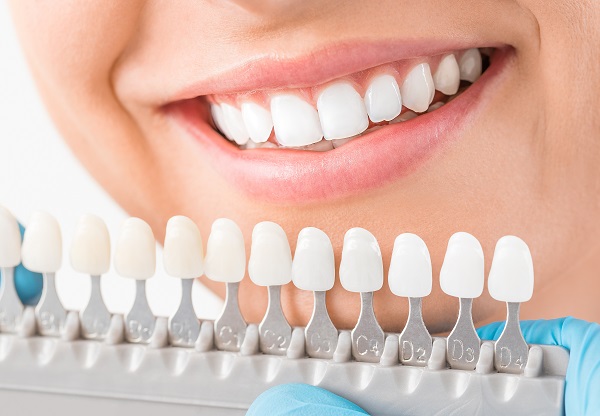The Cause and Treatment Methods for Tetracycline Teeth
What are Tetracycline Teeth?
Tetracycline teeth are a type of tooth discoloration that occurs from consuming tetracycline antibiotics during the growth stages of teeth in childhood.
In the 1960s, tetracycline antibiotics were commonly used in cough syrup medications and were frequently prescribed.
The characteristics of tetracycline teeth include a gray to brownish discoloration and distinctive striped patterns on the teeth.
Causes of Tetracycline Teeth

Tetracycline teeth occur when tetracycline binds with the calcium in dentin.
Teeth have an outer layer of enamel and an inner layer of dentin. Normally, the enamel is white, while the dentin inside has a yellowish hue.
When tetracycline antibiotics are consumed, the inherently yellowish tetracycline binds with the calcium in the dentin and deposits there.
This binding, when exposed to ultraviolet light, triggers a chemical reaction that gradually deepens the discoloration.
Tetracycline teeth are classified into four stages
The degree of tetracycline discoloration is classified into four stages, ranging from mild to severe discoloration.
F1 (First Degree)
- The teeth are uniformly discolored in light yellow, brown, or gray
- No stripe patterns are observed
F2 (Second Degree)
- The color is darker than the first degree, with the teeth uniformly discolored
- No stripe patterns are observed
F3 (Third Degree)
- The teeth are discolored in dark gray or blue-gray
- Stripe patterns are visible
F4 (Fourth Degree)
- The overall staining is intense
- Stripe patterns are clearly visible
Treatment Methods for Tetracycline Teeth
Treatment options for tetracycline teeth include whitening, laminate veneer treatment, and ceramic crowns.
Whitening

Whitening is a treatment that lightens teeth by applying a special medicine to the tooth surface and letting it set for a time.
It doesn’t require shaving down your teeth, making it the most convenient of the three treatment methods for tetracycline teeth.
While effective for mild tetracycline teeth, it often shows limited to no effect on moderate to severe cases, and it is difficult to eliminate the distinctive striped patterns.
The whitening effect is not permanent, and the teeth may gradually revert to their original color after about six months. To maintain the whiteness for a longer period, a combination of in-office whitening and at-home whitening, along with regular maintenance after whitening, is necessary.
Laminate Veneers
Laminate veneer treatment involves shaving a layer off the tooth’s surface and attaching a thin ceramic shell on it.
It’s an ideal option for individuals who found whitening treatments insufficient and wish to conserve as much of their natural tooth as possible. It is applicable to all degrees of tetracycline teeth, from mild to severe, and can effectively improve the distinctive striped patterns of tetracycline teeth.
Another advantage is that the treatment can be performed without removing the tooth’s nerves.
Ceramic Crowns

Ceramic crown treatment improves tetracycline teeth by shaving the tooth, possibly treating the nerve if necessary, and then covering it with a ceramic crown.
This method is not only suitable for all degrees of tetracycline teeth, from mild to severe, but it also allows for the improvement of the front teeth’s alignment and size.
Furthermore, by applying ceramic crowns to a set number of teeth visible when smiling, it’s possible to achieve the ideal level of whiteness, ranging from natural white to bright white.
While laminate veneer treatment only whitens the front side of the teeth, ceramic crown treatment can whiten up to the back side of the teeth as well.
Additionally, the bond between the tooth and the ceramic crown is larger compared to laminate veneer, enhancing the durability and strength of the treatment.
Short-term Intensive Treatment Using Online Consultation

We offer short-term intensive treatments for international visitors, that can be completed in as short as two weeks. By utilizing online platforms like Zoom, we plan the treatment schedule to ensure a smooth completion upon your arrival.
We start by utilizing online systems like Zoom to establish a treatment schedule, ensuring that once you arrive, we can proceed smoothly and complete the treatment without delay. We will discuss in detail the number of visits, schedule, and provide a precise estimate for the treatment plan.
Please send us an inquiry form to discuss your options if you are interested in short-term intensive treatment. *Please Note that short-term intensive plans for overseas customers require a minimum of 4 ceramic treatments.
Feel free to consult us about tetracycline teeth treatment.

Treating tetracycline teeth not only improves the appearance of your mouth area but often significantly refreshes and brightens the overall impression of your face.
We also offer short-term intensive treatments specifically designed for those coming from abroad. We plan treatments to ensure they can be completed smoothly according to your visit schedule.
First, please consult us about tetracycline teeth treatment through our online consultation.
Copyright© whitewhite All Rights Reserved.